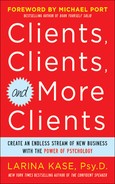Tell Stories to Engage Emotion
,Throughout history, stories have been one of the most powerful ways that people communicate ideas and share emotions. You can use stories to engage people’s emotions in
• One-on-one conversations
• Group conversations
• Presentations
• Audio and written materials on your Web site or social media profile
• Pitches and proposals
How to tell stories that engage emotion
You may remember that I’ve mentioned how in communications, the “how” is more important than the “what.” This means that how you say it is more important than what you say.
When you’ve done a quick read of the situation or planned a story as part of a presentation, you’ll have a good sense of how much time you have. Own that time and use it to make the story engaging and add a little drama. Pause briefly before key points. Speak with more energy and more quickly when you get to exciting points. Ask questions. These may be questions that you want someone to answer in a dialogue or something that you want them to think about. For example, “Can you imagine what she did at that point?”
In terms of what you say, think of your story like a picture book for a young child. There are three key components:
• A beginning, a middle, and an end.
• Great illustrations. Our emotional brains process imagery more readily than language. The goal of your story should be to paint a picture.
• Simplicity and one clear moral of the story.
In addition to the visual sense, you may draw other senses into your stories as well. Sensory perception and emotion go hand in hand. Have you ever walked into a room with the smell of freshly baked apple pie or cookies and felt comfortable and happy? Certain scents, such as vanilla and lavender, are associated with pleasurable feelings. Even thinking about these scents (without actually smelling them) can stimulate the brain to produce the positive emotion. So including the five senses (sight, smell, touch, sound, and taste) in your stories makes the stories not only more interesting, but more emotionally powerful.
The bottom-line storytelling technique
People sometimes hesitate to tell stories because they are afraid that they will take too long. You can tell a full story or give a brief version. If you have only a limited window of time, a good way to give a brief version of the story is to share the outcome or bottom line. For example, a financial advisor might say to a real estate agent, “I recently worked with this great young professional couple and helped them figure out how to save for their down payment on their dream home, so they may be in need of your services soon.” The real estate agent then has the opportunity to ask questions about the story of how the couple created their savings plan or about how they may be in need of her services. Either way, the story grabs attention, piques curiosity and interest, and creates a desire to learn more.
Have a background story
I love it when I hear the name of a company or a program and there’s a story that goes behind it. When my clients are working on branding their businesses, I suggest that they list names associated with important stories from their personal or professional lives. This is a great way to bring ideas to life and infuse them with emotion. One of my clients, a bright, creative leadership consultant named Zita, thought of a story about how one of her three sons once refused to eat his breakfast. He said that he’d rather put jam on a stone from the garden and eat that. Zita then went out and got a stone, put some apricot jam on it, and playfully served it to him on a nice plate (I told you she is bright and creative). She named her business PebbleJam, and the story serves as a metaphor for how leaders develop with her services. It also creates a wonderful visual, which you now know is key to attracting attention and engaging emotion.
The other background story that you want to have is your own story. How and why you got into the work that we’re doing. This story shows the reason that you’re passionate about what you do. As the quote in the beginning of the chapter shows, zest and enthusiasm attract zest and enthusiasm. Another important benefit of your story is that it provides listeners with a sense of coherence about you—what you do and who you are fit together. It just feels right. This sense of coherence is calming and relaxing. It also establishes trust and credibility, which we’ll discuss in the next chapter.
